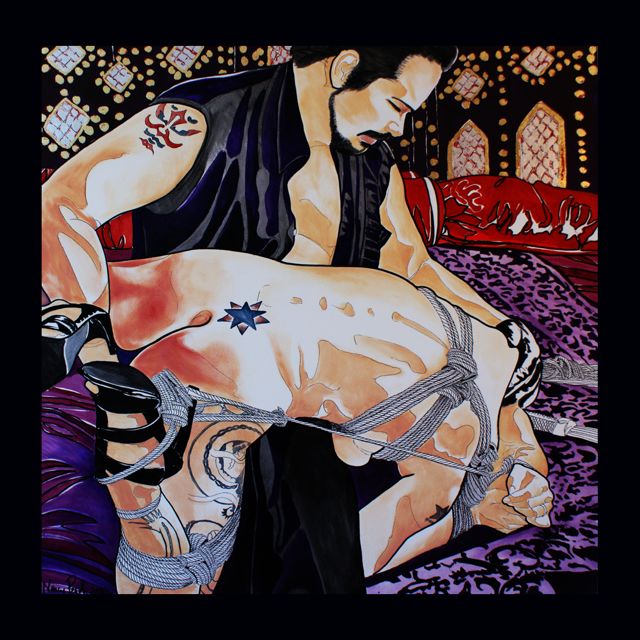Reposted from my Fetlife Writing of the same name.
Recently I read an excellent article about the author Ursula K. Leguin. She spoke of “five principal elements,” which must “work in one insoluble unitary movement” in order to produce great writing.
Quote:
- The patterns of the language — the sounds of words.
- The patterns of syntax and grammar; the way the words and sentences connect themselves together; the ways their connections interconnect to form the larger units (paragraphs, sections, chapters); hence the movement of the work, its tempo, pace, gait, and shape in time.
- The patterns of the images: what the words make us or let us see with the mind’s eye or sense imaginatively.
- The patterns of the ideas: what the words and the narration of events make us understand, or use our understanding upon.
- The patterns of the feelings: what the words and the narration, by using all the above means, make us experience emotionally or spiritually, in areas of our being not directly accessible to or expressible in words.
Since my thoughts tend towards the rope arts, I couldn’t help but see some parallels in what people talk about as being “kokoro”, “kinbaku”, or “really fucking awesome rope scene”, depending on the language you prefer. To me, the parallels went something like this:
The Five Principal Elements of Great Rope Bondage
- The textures of the rope: Jute, hemp, MFP, sisal, bamboo-silk, lemur, whatever. The scent, the color, the twist, the weight, all the sensory characteristics.
- The patterns of knots and frictions: the way the rope is connected together; the ways their connections interconnect to form the harnesses, bindings, shapes, and how that affects movement of the tier and tiee, in tempo, pace, tightness, and shape in scene.
- The patterns of the harness: what the knotted and twisted rope makes us see (or experience) either as voyeur or participant.
- The patterns of the scene: the events the rope and knots and harnesses of enable us to do – immobilize, suspend, torture, fuck, whatever.
- The patterns of the feelings: What the top(s) and bottom(s) and audience, using all the above means, experience emotionally or spiritually, in areas of our being not directly accessible to or expressible in words.
In the article, Ms. LeGuin went on to explain:
If any of these processes get scanted badly or left out, in the conception stage, in the writing stage, or in the revising stage, the result will be a weak or failed story.
What I like about this perspective is that it validates the both the conversations about things as small as the proper way to fold a Munter Hitch (sorry, nodome), and as large as “is that art?” because all of those parts are necessary.
Let’s use a hypothetical example: someone is concerned about the proper way to tie a TK, and spends thousands of words debating it. Excellent! They are working on step three, “the patterns of the harness” – much as a writer will learn the craft of description, of “show, don’t tell” and the like.
Are people arguing passionately about a knot? It’s not much different than a heated defense of the Oxford comma (I warn you, don’t get me started).
None of it is trivial; instead, it is essential that all these parts be there, and working in harmony with each other to accomplish the goal of feeling, whatever that may be.
Best of all, to compare it to writing means that we understand that yes, there are extremely well-educated writers who produce dreadfully dull work as well as people who break all the rules yet produce masterpieces (Ulysses, anyone?). And the fact that you can have someone who is celebrated as a fantastic writer with every award possible – but you, particularly, don’t like their work.
That’s ok. There are people who do, and the world is large enough to contain both Madhuri Blaylock and Irvine Welsh and even produce an Emily Dickinson every once in a while. I think there’s room in the rope world for an Esinem and a Nikki Nefarious, a Mollena Williams and a Nina Russ, Tony Buff and Amy Morgan.
At least, there’s enough room in my own “people whose work I’d like to watch” spankbank.
The Value of Failing
In the article, LeGuin also adds:
Failure often allows us to analyze what success triumphantly hides from us.
…which echoes Topologist’s comment a while back about preferring to work with partners who have been through an injury of some kind (apologies if I am misquoting). I would rather be a rigger who has had shit go wrong, faced the stress of an emergency and dealt with it effectively than someone who, by dint of either parroting steps or simple luck has never had to find out how they react when something goes wrong.
That makes room for newbies. For people who are trying shit out to see what works, for people who are looking at the structure of ties, asking “why?” and doing something new and having it go wrong. It makes room for differing styles and gives validity to the process, wherever an individual may be.
At the same time thinking about rope scenes in terms of these principal elements helps us not lose track of the fact that we are tying people, not pictures, and that perhaps we need to remember that the true efficacy of a tie is in the experience of the people involved.
Everything else is just semantics.


 Follow
Follow